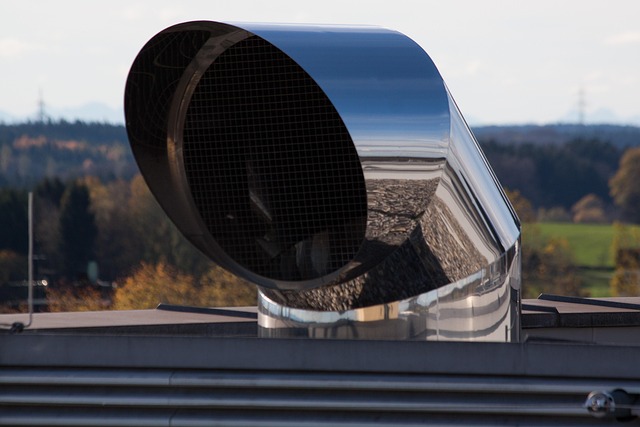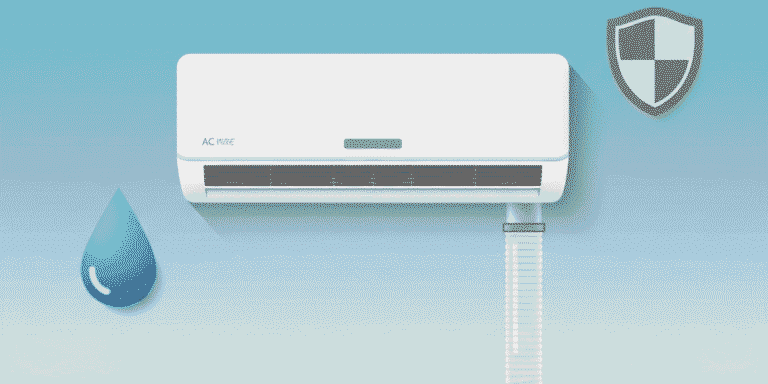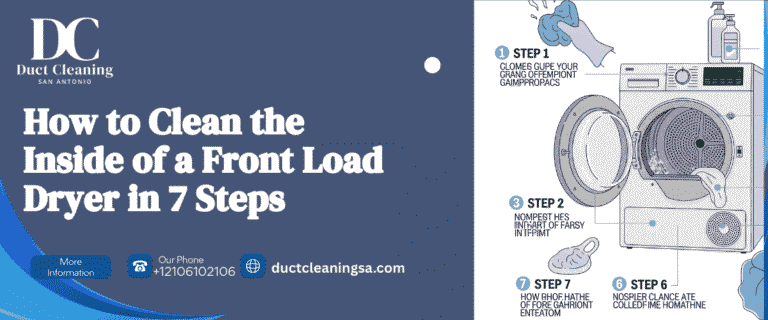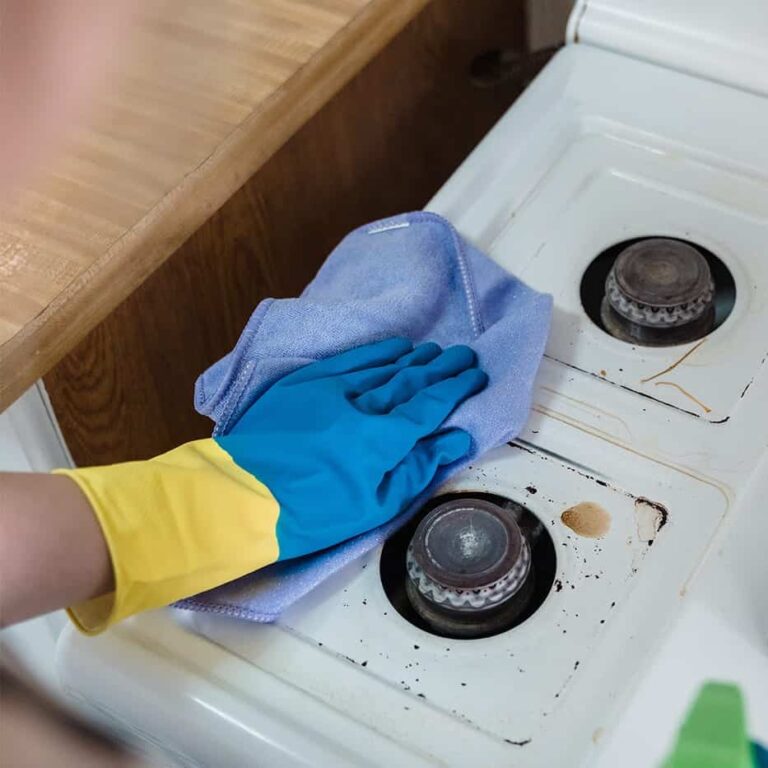Key Takeaways
- Professional air duct cleaning costs a national average of $450 to $1,000. Your cost will fluctuate depending on area, size of the home and what the work involves.
- Be aware of their pricing structure before you schedule. A lot of times, they go by vent and they can run $25 to $50 each, so you count supply and returns to get your total.
- Flat rate packages are handy, but they can omit add-ons such as dryer vent cleaning or mold treatment. Verify scope, guarantees and any fees in writing.
- Your bottom line is dictated by system complexity, duct accessibility and contamination degree. You should have clear access to vents, inventory your HVAC components and look for any mold, pests or excessive dust to receive accurate quotes.
- Cleaning frequently rewards when you spot debris, sense lingering odors, complete a remodeling or experience unexplained allergies. Monitor symptoms, airflow and energy consumption pre and post service to quantify results.
- Save smart and don’t cut corners by securing a minimum of three detailed quotes, booking during off season windows, bundling services, and selecting NADCA-certified pros who use HEPA and negative-air equipment. Watch out for bait-and-switch prices.
Air duct cleaning prices in the U.S. Are between $300 and $700 for a single-family home, with the majority of homeowners paying around $450. Rates vary by home size, quantity of supply and return vents, system accessibility, and — services.
Most pros bill $25 to $50 per vent or a flat $300 to $600, plus $100 to $300 for add-ons like dryer vents or coils. The guide below describes line items, quotes, and how to plan.
Understanding Air Duct Cleaning Costs
Air duct cleaning costs, influenced by the size and layout of your home, vary based on the company’s pricing structures and included services. Understanding the average air duct cleaning costs can help you budget effectively and avoid any last-minute surprises in your air duct cleaning service.
1. The National Average
For the average home with standard ductwork and no extreme contamination, the national average comes in around $450 to $1,000. That minimum includes supply and return trunks and branch lines, and basic plenum work with negative-pressure equipment.
Real-world invoices flutter with geography, labor rates and access—coastal cities like LA and New York often hang out at the top of the range due to high operating costs, while smaller markets tend toward the bottom. Real costs rise with larger floorplans, multiple HVAC systems or confined crawlspaces.
If the system has contamination or requires coil, blower, or air handler cleaning, anticipate add-ons. To find out how you measure up, contrast your local quotes with the national band in an easy table that matches your ZIP code, home size and number of systems to common ranges.
2. Per Vent Pricing
Other pros bill $25 to $50 per vent. That rate is often per supply register and per return grille, so both sides of the equation matter.
Walk the home and write down each vent location – bedrooms, halls, baths, laundry and main returns – to construct a precise tally before you call. A 16-vent home at $35 per vent comes in around $560, while 24 vents at $45 clocks in at $1,080.
Complex layouts, high ceilings, or zoned dampers can push the per-vent rate higher or activate access fees. Make sure to ask if main trunks and plenums are included – not just the grilles.
3. Square Footage Estimates
Most companies price by total square footage, commonly at $.15 to $.40 per sq ft. A 2,000-sq-ft house might be close to $300 to $800 by this method, but the final invoice accounts for duct length, stories, attic or crawlspace work, and cleanliness.
Bigger homes with more ductwork, more vents, and multiple systems can hit $1,000 to $3,400 or more, particularly when access is difficult. Count schematics. Two air handlers typically equate larger labor, larger trunks and larger cost.
If mold is involved, mold remediation can tack on $1,100 to $3,400.
4. Flat Rate Packages
Others offer flat packages (say, $750 for a typical-size home) consisting of negative-pressure cleaning supply and return lines and rudimentary trunk work.
Flat rates tend to not include dryer vent cleaning, coil cleaning, blower/fan housing, grilles and registers, and drip pans. These can be invoiced as line items.
Ask for a written scope: what areas, how many vents, which components, and what chemicals or sealants, if any. Note that sometimes, post-cleaning particles can test higher than prior, so techniques and containment are important.
Know how to compare flat rates with itemized bids. Consider overall cost, what’s included, and how often—average home cleans every 3–5 years. DIY tools make it perhaps 10 feet into a vent; they can’t substitute for a full-system clean.

What Drives Your Final Bill?
Air duct cleaning pricing varies based on factors like the size and layout of your duct system, as well as the level of dust removal needed for clean air ducts.
System Complexity
Big houses with long runs or several branches require additional time. Look for pricing on a per‑square‑foot basis of around $0.15 to $0.30, with line items based on system size and register counts — typically $25 to $50 per vent.
Two or more HVAC units, zoning dampers or custom trunks contribute labor. Die old sheet metal with bizarre transitions or tight offsets can bog down techs. Flex ducts require meticulous labor to not tear them, which can increase both scope and cost.
For better estimates, list what’s in place: number of air handlers, vents, returns, filter sizes, humidifiers, UV lights, and whether ducts are metal, fiberglass‑lined, or flex. Commercial systems are more expensive because of scale and rooftop access and controls.
Duct Accessibility
Hidden/blocked ducts drive labor. Runs behind finished walls, high ceilings, or soffits require inventive reach, which adds time. Attic and crawl space ducts typically translate into additional staging, ladders, lighting, PPE, and safety procedures.
In cramped LA attics or tight crawl spaces, crews might tack on 10%-20% for hard access. Provide clear space around returns, furnace closets, and supply vents. Shift furniture, elevate floor grates, and unlatch side yards or roof hatches.
These little prep steps can shave an hour or more and help you avoid surcharges.
Contamination Level
Light dust is the least expensive case. Heavy debris, pet hair mats or construction grit require more time. Mold changes the scope entirely: verified growth usually requires containment and treatment, which can add about $1,100 to $3,400.
Pest activity–droppings, nesting or insects–usually activates sanitation and sealing, tacking on about $200 to $1,200. Flex ducts with imbedded dust or odor can require additional cleaning.
Check for gray lines on vent covers, musty or sour smells at supply boots, or scratching sounds to brazen risk before you call. Regular cleanings prevent serious deposits and maintain prices under control.
Regional Rates
Labor rates and demand are different by market. In high‑cost metros like LA, anticipate higher base pricing and longer lead times in peak heating or wildfire seasons.
Seasonal specials help balance rates. See if they’d bundle in dryer vent cleaning ($125-$300) or optional duct coating ($180-$630) if it fits your system.
Checklist to Check Local Prices
- Collect home size, vent count and duct type (metal, flex, lined).
- Note access challenges: attic height, crawl clearance, roof units.
- Inquire whether estimates account for per-vent fees and sanitizer, if utilized.
- Request breakdowns for mold or pest add‑ons, if found.
- Compare 2-3 licensed firms; read recent local reviews.
- Verify NADCA procedures, coverage and documented scope with “not-to-exceed” language.
When Cleaning Pays For Itself

Cleaner ducts can improve indoor air quality and allow HVAC systems to operate with less effort. In dust-, wildfire smoke- and long cooling season-battling Los Angeles homes, that translates to lower utility bills and less repair calls.
When Fido’s fur flies and stench stinks, particularly with the ancient, never-cleaned models. When family members suffer from allergies or asthma or lots of coughing at home. When rooms feel stuffy or airflow is weak or your vents spit dust. Following drywall, flooring or kitchen remodels that produce fine dust. When energy bills inch higher with no thermostat change. When you sniff musty or moist whiffs from supply or return vents.
In the average home, hiring a cleaning service costs around $450 to $1,000. Larger homes, multiple zones and complex duct runs cost more, but the long-term payback appears in more consistent comfort, less breakdowns and utility savings as the system doesn’t have to work as hard.
Follow the return by capturing cleaning dates, photos, static pressure or airflow observations from the technician, filter lifespan, and energy bills for the subsequent 3-6 months.
Visible Contaminants
If you are noticing dust mats, lint clumps or mold on your vent grilles or just inside the register, schedule cleaning. This is typical after Santa Ana winds or a dry summer when windows remain open and fine dust flows throughout the home.
Limited air flow causes the blower to work harder, which increases energy consumption and can also prematurely wear out the bearings. Stripping off all that muck means the coils and motors will stay cleaner, helping efficiency and potentially prolonging life of equipment.
Cleaner ducts equals less particulates in circulation, on surfaces and people with allergies are exposed to less. After a good clean, many homes hear less sneezing and coughing in the morning congestion.
Checklist to prep and document:
- Photograph each supply and return, with the grille removed, and put a coin in there for scale for dust thickness!
- Get close-ups on any discolorations, slime or fuzzy growth, location and room note.
- Snap the filter, coil face (if available) and blower compartment for baseline.
- Keep track of room names, number of vents and which ones stink or blow weak.
- Keep a simple log: date, contractor, methods used (negative-pressure vacuum, brush, sanitizer if applied), before/after photos, and notes on airflow.
Persistent Odors
Musty, wet-cardboard or sour smells from vents indicate secret moisture, mold or bacteria on duct walls or around the evaporator coil. A full clean attacks the root, not the symptom and frequently includes cleaning the coil and drain pan.
Once serviced, give it a week with the system cycling — if the odors return, more than likely you have deeper contamination or a moisture problem that requires sealing, insulation repairs or coil servicing.
Post-Renovation Dust
Of course, major remodels stir up drywall dust and sawdust and fine silica that settle in returns and coat the coil. That grit can choke airflow and force longer run times, pushing bills up.
Throw duct cleaning on that post-reno checklist with filter replacement and a coil check. Timing as soon as punch list items wrap so dust doesn’t re-circulate and settle into the system for months.
Unexplained Allergies
If sneezing, itchy eyes or nighttime coughs rule at home but not issues consider duct cleaning. Dust mites, pollen, pet dander, and fragments that continually cause symptoms can lurk in dirty ducts.
Deep cleaning, combined with top-quality, high-MERV filters and sealed duct joints, enables cleaner indoor air and more stable comfort. Record symptoms for two weeks prior to and following cleaning, monitor filter loading on a monthly basis, and examine utility bills. Older systems exhibit the clearest gains as less wear and tear accumulates.
The Hidden Costs of Cheap Service
It’s easy to be tempted by air duct cleaning prices that seem too good to be true — because they usually are. A $99 special might buy a few vents, not the entire air duct system, leading to upsells once crews show up. The average cost for comprehensive cleaning of the entire air duct system is in the $450–$1,000 range, based on home size, vent count, and system complexity, which is typical throughout many U.S. markets, including Southern California with its dust and wildfire smoke.
Bait-and-Switch Tactics
Low ads trigger test calls, triggering expenses post ‘free’ test. The lead price may be for a single trunk line or a few vents, not the whole supply and return system. Others crank sanitizer fogs, coil “refreshers” or UV kits you don’t need.
These add-ons can top the initial estimate and still leave ducts grimy if the foundational cleaning was superficial. Demand a written, line-item price for all ducts and returns before work commences. Inquire whether or not the price includes the air handler, plenums and all registers.
Note the agreed scope and price per vent (if applied) and any chemicals. Pre and post photos go a long way toward staving off surprise fees and arguments down the road.
Inadequate Equipment
Cheap services frequently use shop-vacs, underpowered portable units and non-HEPA tools that allows fine dust to blow back into the house. Without a high-powered negative air machine sealed to the ductwork (and true HEPA filtration), dust buries itself in the branches, settles in the air handler, and muck up the blower and coils.
That translates into additional dust, less efficient HVAC and premature filter clogging that increases energy use over time. Ask what will be on site: a truck-mounted or high-CFM negative air machine, rotary or pneumatic brush systems sized for your duct material, sealed access panels, and HEPA vacuums. If the tech won’t talk about their configuration in layman’s terms or won’t provide equipment specs, run.
Uncertified Technicians
Untrained crews can puncture flex ducts, or tear insulation, or miss returns, causing uneven cleaning and leaks you won’t immediately detect. NADCA-certified firms observe ACR standards, implement appropriate containment, and understand when to cut and seal access without damaging the system.
Confirm the company’s NADCA membership, insurance and the techs’ credentials before scheduling. Certified pros tend to provide more durable results and safeguard your system, which saves dough versus repeat “bargain” cleanings.
Potential Home Damage
Hard steel brushes on delicate flex ducts can shred liners. Over-aggressive cleaning may dislodge duct mastic, bend dampers, or loosen the coil cabinet. Negligent handling near the air handler can nick refrigerant lines, damage wiring, or shove debris into the blower housing — repairs that dwarf the cleaning cost.
Validate they have general liability and work comp. Inquire about how they safeguard coils, dampers and insulation and who is responsible for payment if something should break. Post the gig, inspect a couple registers, identify sealed access panels, and examine photos or videos of clean trunks and returns.
The DIY Cleaning Trap
Diy air duct cleaning sounds great on paper, but it has pitfalls that impact outcomes and overall expenses. Most do‑it‑yourself installations only extend to what you can view and physically reach. That is, a swift sweep at the sifter and perhaps a brief incursion into the duct with a brush or hose.
In most homes this cleans just 10 feet into each vent— a tiny slice of a duct run that can criss-cross across rooms, ascend walls and navigate through the attic. Most of the dust, dander and fine debris sits well beyond that, so a quick clean at the vents just leaves a lot behind.
House vacuums and rudimentary tools just don’t compare to pro gear. Shop vac, bristle brush, goggles, masks, rags—usually $10 to $30 all together—aid in surface dust, but they can’t suction dense buildup from trunk lines or bust loose compacted lint around elbows and seams.
Pro rigs employ negative‑pressure vacuums with high CFM and rotary brush systems that sweep and suck simultaneously. That combo counts if you reside in dry, dusty regions or ones struck by wildfire smoke, such as much of Southern California, where fine ash sinks deep into the ducts and adheres to the liner.
Then there’s the risk side. Without knowing the system, you can easily loosen tape seams, bend flex duct, nick the inner liner, or push debris farther down the run. Pulling a vent cover too hard may crack the boot or strip the screws.
Vacuuming with a home vac can blow dust right back into the room if it has a weak seal, spreading allergens and making your HVAC filter clog fast. If you strike the coil or blower with dust, you could restrict airflow and increase energy consumption. These slips are more expensive to repair than the money saved up front.
Savings are tangible but varied. Others might save $200-$500 by cleaning ducts themselves. That figure discounts travel time, figuring out where your system is positioned, and follow-up cleanings if the initial sweep didn’t get to the main lines.
DIY cleaning likely only cleans the bits you can get to, so debris, pet hair and fine dust can remain and waft back into the home. A pro clean is more exhaustive and durable because it attacks the entire system—supply, return, trunk lines and the plenum—under controlled negative pressure.
Either way, regular upkeep helps: change filters on schedule, vacuum around duct openings, and keep registers clear of rugs and dust so you can stretch the time between deep cleans.
How to Save Without Sacrificing Quality
Try to save intelligently, not scrimp. Prioritize routine air duct cleaning and annual HVAC inspections, along with filter changes every 30–90 days, to prevent bigger bills and prolong system life. Average air duct cleaning costs approximately $0.15–$0.40 per square foot, making regular cleaning a wise investment.
Bundle Services
Add duct cleaning to dryer vent or furnace cleaning to receive a package price. One crew, one visit, one setup fee. That cuts down labor time and truck rolls and minimizes the possibility of add-on charges. It results in less downtime at home.
Request an all-in quote covering supply and return ducts, trunk lines, blower compartment and the air handler, as well as the dryer vent. Bundled checks can frequently identify early problems during the same service call.
This allows for cleaner airflow and less strain on motors and coils. Cleaner ducts and vents keep your HVAC running at design airflow, which can extend equipment life and stabilize energy consumption.
In LA and much of SoCal, lint-laden dryer vents and all-year cooling loads render bundles useful. Less trips, fresher air, less costs in the long run.
Ask About Off-Season
Book during shoulder seasons—typically spring and fall in LA—when temperatures are moderate and itineraries are less demanding. Most companies offer air duct cleaning services at discounted rates to fill crews between peak summer cooling and winter heating. You can frequently score reduced rates, more accommodating time windows, and specials such as free dryer vent cleaning or waived trip fees.
Put inspections on your calendar for the same month every year, and schedule routine air duct cleaning every three to five years. This timing helps stop mold and pest nest issues before the extremes arrive. Full mold remediation costs thousands and can be avoided with proper air duct cleaning.
Regular cleaning maintains air handlers cleaner, shielding coils and blowers from debris that lead to premature wear. Over time, a clean air duct system and a high-efficiency unit with a high SEER2 rating can reduce monthly bills, even if the equipment was more expensive initially.
Add this to your routine filter changes, and you reduce pressure drop and keep clean air ducts longer—compounding savings on energy costs.
Get Multiple Quotes
Collect a minimum of three written quotes. Request a per-square-foot rate, evidence of NADCA or equivalent training, what is included, and any travel, access, antimicrobial, or “per vent” charges. Peaches to peaches to steer clear of teaser rates.
Utilize the same home size and scope for each estimate, and seek warranty terms and before/after photo or video documentation. This provides an equitable perspective on pricing and enables you to identify outliers quickly.
Then, pick value, not the bottom number. Up front honest pricing combined with a clearly defined scope typically wastes less money in the long run.
| Provider | Total Price | Rate Basis | Inclusions | Notes |
|---|---|---|---|---|
| Firm A (NADCA) | $480 | $0.20/sq ft (2,400 sq ft) | Full supply/return, trunks, air handler; photos | 12-month workmanship warranty |
| Firm B | $349 | Flat | Main ducts only; dryer vent additional | Add-ons for access, antimicrobials |
| Company C (Licensed HVAC) | $560 | $0.23/sq ft | Ducts, air handler, dryer vent; inspection | No hidden fees; off season 10% off |
Conclusion
It has real costs, but the math remains clean. Size, vents, access and gunk determine the price. Value appears in fresher air, reduced dust, and consistent airflow. A small condo with easy vents may come in near the low end. A big house with hard access and pet hair might come in higher. Costco jobs skip the key steps DIY generally misses deep lint and mold. Smart play: ask for scope, not hype. Search for before / after pics. Request a flat rate by system, not by vent. Shoot for a reasonable scheme, not the bottom bid.
Need help comparing prices in your area? Shop local, get two or three local quotes and request the full checklist before you book.
Ready to improve your indoor air quality? Whether it’s mold, dust, or routine maintenance, our experts have you covered. Contact us today to book your professional duct cleaning service.
Frequently Asked Questions
How much does air duct cleaning cost in Los Angeles?
In Los Angeles, the average cost for comprehensive cleaning of air ducts typically ranges from $400 to $800, influenced by factors such as home size, number of vents, and level of contamination. For routine air duct cleaning, per-vent quotes often fall between $25 and $50, so ensure you obtain a flat, all-in price before scheduling your air duct cleaning service.
What drives my final bill for duct cleaning?
Key factors influencing the average air duct cleaning costs include home square footage, the number of supply and return vents, system accessibility, and debris levels such as pet hair or renovation dust. Additionally, add-ons like dryer vent cleaning may affect the total cost.
When does duct cleaning pay off?
It pays when you breathe better with clean air ducts, hot/cold spots calm, and your HVAC system runs less often. This can reduce energy consumption and prolong equipment life, especially after wildfire cleaning that enhances indoor air quality.
What are the hidden costs of “cheap” offers?
Low teaser prices for air duct cleaning services frequently don’t include main trunks, returns, or sanitizing. Technicians can upsell mold treatment or “required” add-ons on location. Demand a written, flat-rate scope that lists each vent, trunk, and covered service along with before/after pictures to ensure proper air duct cleaning.
Is DIY duct cleaning a good idea?
Not in the majority of homes.) Home vacuums can’t generate the static pressure required for effective air duct cleaning services. You can shake loose debris, tear flex duct, or distribute visible dust. Older LA homes have asbestos in the walls, making proper air duct cleaning dangerous and expensive to remediate.
How often should ducts be cleaned in LA?
For optimal results, schedule routine air duct cleaning every 3–5 years for most homes, or consider 1–3 years if you have shedding pets, allergies, or recent remodeling, especially before the cooling season.
How can I save without losing quality?
Obtain three written estimates for air duct cleaning services with a flat scope. Schedule for the off season and consider including dryer vent or coil cleaning. Select NADCA-certified pros using professional duct cleaning equipment and HEPA-filtered negative-air units.




